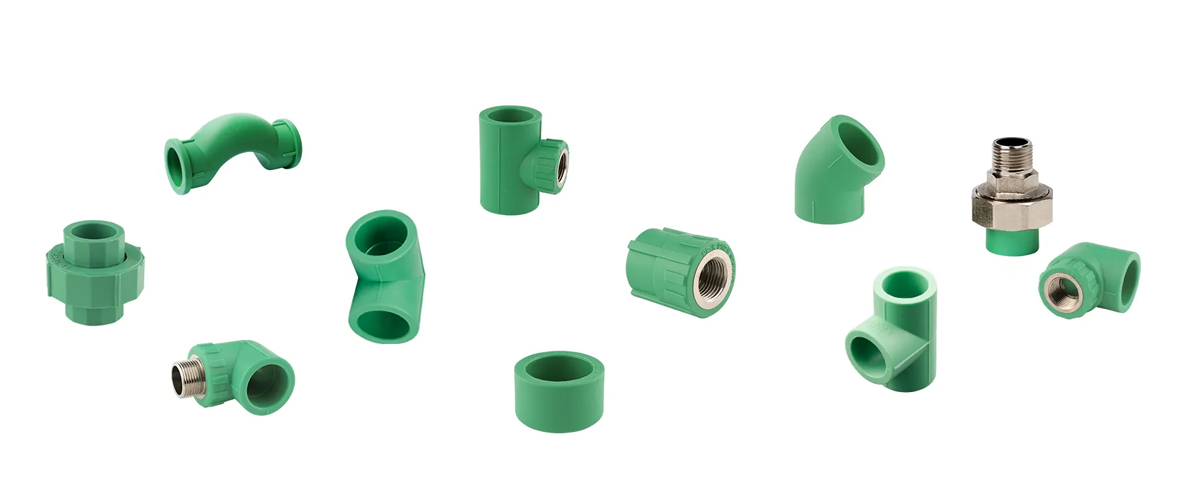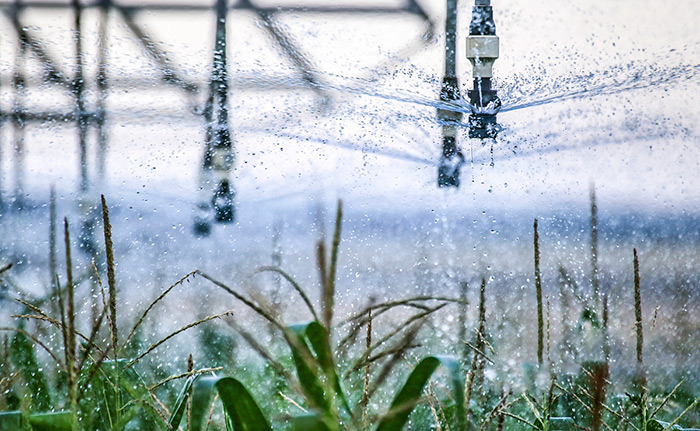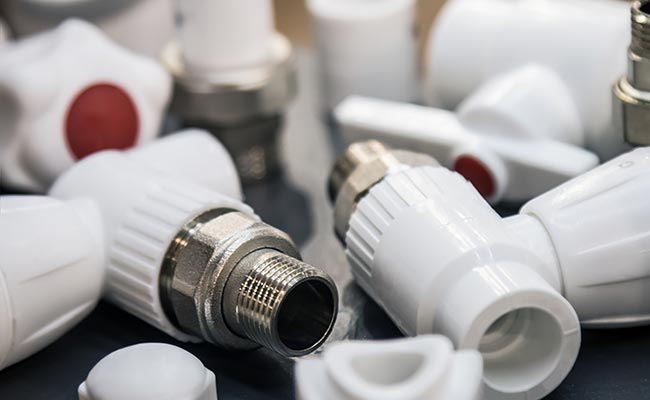
ຖ້າທ່ານກໍາລັງເຂົ້າໄປໃນໂຄງການທໍ່ນ້ໍາ, ທ່ານອາດຈະໄດ້ຍິນກ່ຽວກັບສອກຫົວນົມ PPR 90 DEG. fitting ນີ້ຊ່ວຍໃຫ້ທ່ານເຊື່ອມຕໍ່ທໍ່ໃນມຸມ 90 ອົງສາທີ່ສົມບູນແບບ. ເປັນຫຍັງມັນຈຶ່ງສໍາຄັນ? ມັນຮັກສາລະບົບທໍ່ຂອງເຈົ້າໃຫ້ແຂງແຮງ ແລະບໍ່ຮົ່ວໄຫຼ. ນອກຈາກນັ້ນ, ມັນຮັບປະກັນການໄຫຼຂອງນ້ໍາລຽບ, ເຊິ່ງເປັນກຸນແຈສໍາຄັນໃນການຕິດຕັ້ງທໍ່ນ້ໍາທີ່ເຊື່ອຖືໄດ້.
Key Takeaways
- ເລືອກກPPR ສອກ 90 ອົງສາທີ່ເຫມາະກັບຂະຫນາດທໍ່ຂອງທ່ານ. ນີ້ເຮັດໃຫ້ການເຊື່ອມຕໍ່ແຫນ້ນແຫນ້ນແລະຢຸດການຮົ່ວໄຫຼ.
- ເບິ່ງຢູ່ໃນຄວາມກົດດັນຂອງຂໍ້ສອກແລະຂອບເຂດຈໍາກັດອຸນຫະພູມເພື່ອໃຫ້ກົງກັບລະບົບຂອງທ່ານ. ນີ້ເຮັດໃຫ້ມັນເຂັ້ມແຂງແລະເຮັດວຽກໄດ້ດີ.
- ຕິດຕັ້ງມັນຢ່າງຖືກຕ້ອງໂດຍການວັດແທກແລະຈັດລໍາດັບຢ່າງລະມັດລະວັງ. ນີ້ຫຼີກລ້ຽງຄວາມຜິດພາດແລະເຮັດໃຫ້ມັນບໍ່ມີການຮົ່ວໄຫຼ.
ສອກຫົວນົມ PPR 90 DEG ແມ່ນຫຍັງ?
ຄໍານິຍາມແລະຫນ້າທີ່
A ສອກຫົວນົມ PPR 90 DEGເປັນທໍ່ທໍ່ພິເສດທີ່ອອກແບບມາເພື່ອເຊື່ອມຕໍ່ສອງທໍ່ຢູ່ໃນມຸມ 90 ອົງສາ. ມັນເປັນອົງປະກອບຂະຫນາດນ້ອຍແຕ່ສໍາຄັນໃນລະບົບທໍ່ PPR, ຊ່ວຍໃຫ້ທ່ານສ້າງການຫັນກ້ຽງໂດຍບໍ່ມີການປະນີປະນອມການໄຫຼຂອງນ້ໍາ. ບໍ່ວ່າທ່ານກໍາລັງເຮັດວຽກຢູ່ໃນໂຄງການທີ່ຢູ່ອາໄສຫຼືການຄ້າ, ການ fitting ນີ້ຮັບປະກັນວ່າລະບົບປະປາຂອງທ່ານຍັງຄົງປະສິດທິພາບແລະບໍ່ຮົ່ວໄຫຼ.
ເປັນຫຍັງມັນຈຶ່ງສໍາຄັນ? ດີ, ມັນທັງຫມົດກ່ຽວກັບຄວາມທົນທານແລະການປະຕິບັດ. ບໍ່ເຫມືອນກັບເຄື່ອງປະກອບໂລຫະແບບດັ້ງເດີມຫຼື PVC, ສອກຫົວນົມ PPR 90 DEG ຕ້ານ corrosion ແລະຈັດການຄວາມກົດດັນສູງດ້ວຍຄວາມສະດວກສະບາຍ. ນີ້ຫມາຍຄວາມວ່າທ່ານຈະບໍ່ຕ້ອງກັງວົນກ່ຽວກັບ rust, ຮອຍແຕກ, ຫຼືຮົ່ວໄຫຼລົບກວນລະບົບຂອງທ່ານ. ນອກຈາກນັ້ນ, ການອອກແບບທີ່ມີນ້ໍາຫນັກເບົາຂອງມັນເຮັດໃຫ້ການຕິດຕັ້ງມີຄວາມສະດວກສະບາຍ, ເຖິງແມ່ນວ່າທ່ານຈະໃຫມ່ໃນທໍ່ນ້ໍາ.
ເຄັດລັບ:ເລືອກສອກຫົວນົມ PPR 90 DEG ທີ່ກົງກັບຂະໜາດ ແລະປະເພດຂອງທໍ່ຂອງເຈົ້າສະເໝີ. ນີ້ຮັບປະກັນການເຊື່ອມຕໍ່ທີ່ປອດໄພແລະເຊື່ອຖືໄດ້.
ຄຸນສົມບັດຫຼັກຂອງສອກຫົວນົມ PPR 90 DEG
ເມື່ອເລືອກສອກຫົວນົມ PPR 90 DEG, ມັນເປັນປະໂຫຍດທີ່ຈະຮູ້ວ່າມັນກໍານົດຫຍັງນອກຈາກອຸປະກອນອື່ນໆ. ນີ້ແມ່ນບາງລັກສະນະທີ່ໂດດເດັ່ນຂອງມັນ:
- ຄວາມຕ້ານທານຕໍ່ການກັດກ່ອນ: ບໍ່ເຫມືອນກັບອຸປະກອນໂລຫະ, PPR ຈະບໍ່ເປັນ rust ຫຼືຊຸດໂຊມຕາມເວລາ. ນີ້ເຮັດໃຫ້ລະບົບຂອງທ່ານສະອາດແລະບໍ່ມີສິ່ງປົນເປື້ອນ.
- ຄວາມທົນທານຕໍ່ຄວາມກົດດັນສູງ: ອຸປະກອນເສີມ PPR ສາມາດຮັບມືກັບຄວາມກົດດັນທີ່ສໍາຄັນໂດຍບໍ່ມີການແຕກ, ເຮັດໃຫ້ມັນເຫມາະສົມສໍາລັບການນໍາໃຊ້ທີ່ຢູ່ອາໄສແລະອຸດສາຫະກໍາ.
- ຄວາມທົນທານ: fittings ເຫຼົ່ານີ້ຕ້ານການສວມແລະ tear ດີກວ່າທາງເລືອກໂລຫະຫຼື PVC, ເຖິງແມ່ນວ່າພາຍໃຕ້ອຸນຫະພູມທີ່ຮ້າຍໄປ.
- ການອອກແບບທີ່ມີນ້ໍາຫນັກເບົາ: PPR ແມ່ນອ່ອນກວ່າເຫຼັກ, ເຮັດໃຫ້ມັນງ່າຍຕໍ່ການຈັດການແລະຕິດຕັ້ງ.
- ການປ້ອງກັນການຮົ່ວໄຫຼ: ການເຊື່ອມຕໍ່ກະທູ້ທີ່ປອດໄພຮັບປະກັນການປະທັບຕາທີ່ແຫນ້ນຫນາ, ຫຼຸດຜ່ອນຄວາມສ່ຽງຕໍ່ການຮົ່ວໄຫຼ.
- ການບໍາລຸງຮັກສາຕໍ່າ: ດ້ວຍ PPR, ທ່ານຈະໃຊ້ເວລາຫນ້ອຍລົງໃນການສ້ອມແປງແລະການກວດກາທຽບກັບອຸປະກອນໂລຫະ.
ນີ້ແມ່ນພາບລວມດ່ວນຂອງຂໍ້ມູນສະເພາະດ້ານເຕັກນິກຂອງມັນ:
| ຄຸນສົມບັດ | ຂໍ້ມູນຈໍາເພາະ |
|---|---|
| ການນໍາຄວາມຮ້ອນ | 0.24 W/mk |
| ຄວາມຕ້ານທານຄວາມກົດດັນ | ຄວາມເຂັ້ມແຂງຂອງການທົດສອບຄວາມກົດດັນທີ່ດີກວ່າ |
| ອຸນຫະພູມເຮັດວຽກ | ສູງສຸດ 70ºC (95ºC ໄລຍະເວລາສັ້ນ) |
| ຊີວິດການບໍລິການ | ເກີນ 50 ປີ |
| ຄວາມຕ້ານທານຕໍ່ການກັດກ່ອນ | ປ້ອງກັນບໍ່ໃຫ້ເກີດຮອຍເປື້ອນແລະການຂະຫຍາຍຕົວ |
| ນ້ຳໜັກ | ປະມານຫນຶ່ງສ່ວນແປດຂອງເຫຼັກກ້າ |
| ຄວາມຕ້ານທານການໄຫຼ | ຝາດ້ານໃນລຽບເຮັດໃຫ້ຄວາມຕ້ານທານຫນ້ອຍລົງ |
| ປະສິດທິພາບພະລັງງານ | ຫຼຸດຜ່ອນການສູນເສຍຄວາມຮ້ອນໃນນ້ໍາຮ້ອນ |
ນອກຈາກນັ້ນ, ສອກຫົວນົມ PPR 90 DEG ຕອບສະຫນອງມາດຕະຖານອຸດສາຫະກໍາຈໍານວນຫນຶ່ງ, ລວມທັງ:
- CE
- ROHS
- ISO9001:2008
- ISO14001:2004
ການຢັ້ງຢືນເຫຼົ່ານີ້ຮັບປະກັນວ່າທ່ານໄດ້ຮັບຜະລິດຕະພັນທີ່ມີຄຸນນະພາບສູງທີ່ປະຕິບັດຢ່າງຫນ້າເຊື່ອຖືພາຍໃຕ້ເງື່ອນໄຂຕ່າງໆ.
ເຈົ້າຮູ້ບໍ?ສອກຫົວນົມ PPR 90 DEG ສາມາດຢູ່ໄດ້ຫຼາຍກວ່າ 50 ປີດ້ວຍການຕິດຕັ້ງແລະການບໍາລຸງຮັກສາທີ່ເຫມາະສົມ. ນັ້ນແມ່ນການລົງທຶນໄລຍະຍາວໃນລະບົບປະປາຂອງເຈົ້າ!
ວິທີການເລືອກສອກຫົວນົມ PPR 90 DEG ທີ່ຖືກຕ້ອງ
ຮັບປະກັນຄວາມເຂົ້າກັນໄດ້ຂອງທໍ່
ການເລືອກທີ່ຖືກຕ້ອງສອກຫົວນົມ PPR 90 DEGເລີ່ມຕົ້ນດ້ວຍການເຂົ້າກັນໄດ້ຂອງທໍ່. ທ່ານຈໍາເປັນຕ້ອງຮັບປະກັນວ່າ fitting ກົງກັບຂະຫນາດແລະປະເພດຂອງທໍ່ຂອງທ່ານ. ສອກ PPR ມີເສັ້ນຜ່າສູນກາງຕ່າງໆ, ດັ່ງນັ້ນການວັດແທກທໍ່ຂອງທ່ານຢ່າງລະມັດລະວັງກ່ອນທີ່ຈະຊື້. ຖ້າຂະຫນາດບໍ່ສອດຄ່ອງ, ທ່ານມີຄວາມສ່ຽງຕໍ່ການຮົ່ວໄຫຼຫຼືການເຊື່ອມຕໍ່ທີ່ອ່ອນແອທີ່ອາດຈະທໍາລາຍລະບົບທໍ່ຂອງທ່ານ.
ນອກຈາກນີ້, ພິຈາລະນາອຸປະກອນການທໍ່. ສອກ PPR ເຮັດວຽກທີ່ດີທີ່ສຸດກັບທໍ່ PPR, ຍ້ອນວ່າພວກມັນແບ່ງປັນຄຸນສົມບັດການຂະຫຍາຍຄວາມຮ້ອນແລະລັກສະນະການຜູກມັດດຽວກັນ. ວັດສະດຸປະສົມ, ເຊັ່ນການຈັບຄູ່ PPR ກັບ PVC ຫຼືໂລຫະ, ສາມາດນໍາໄປສູ່ການເຊື່ອມຕໍ່ທີ່ບໍ່ສະເຫມີກັນແລະຄວາມທົນທານຫຼຸດລົງ.
ເຄັດລັບ:ກວດເບິ່ງເສັ້ນຜ່າສູນກາງຂອງທໍ່ ແລະວັດສະດຸສະເໝີກ່ອນການຕິດຕັ້ງ. ຂັ້ນຕອນງ່າຍໆນີ້ຊ່ວຍປະຫຍັດເວລາ ແລະປ້ອງກັນຄວາມຜິດພາດທີ່ແພງຫຼາຍ.
ການກວດສອບລະດັບຄວາມກົດດັນແລະອຸນຫະພູມ
ລະດັບຄວາມດັນ ແລະອຸນຫະພູມແມ່ນສໍາຄັນໃນເວລາເລືອກສອກຫົວນົມ PPR 90 DEG. fittings ເຫຼົ່ານີ້ຖືກອອກແບບມາເພື່ອຈັດການກັບເງື່ອນໄຂສະເພາະ, ດັ່ງນັ້ນທ່ານຈໍາເປັນຕ້ອງກົງກັບຄວາມສາມາດຂອງພວກມັນກັບຄວາມຕ້ອງການຂອງລະບົບຂອງທ່ານ.
ການທົດສອບໃນຫ້ອງທົດລອງສະຫນອງຄວາມເຂົ້າໃຈທີ່ມີຄຸນຄ່າໃນວິທີການ fittings PPR ປະຕິບັດພາຍໃຕ້ເງື່ອນໄຂທີ່ແຕກຕ່າງກັນ. ນີ້ແມ່ນລາຍລະອຽດຂອງຂໍ້ມູນການທົດສອບຫຼັກ:
| ປະເພດການທົດສອບ | ພາລາມິເຕີ | ຜົນໄດ້ຮັບ |
|---|---|---|
| ການທົດສອບອຸນຫະພູມສູງໄລຍະສັ້ນ | 95°C: ຄວາມສົມບູນຂອງໂຄງສ້າງສູງເຖິງ 3.2 MPa (ເກີນ PN25) | 110°C: ຄວາມດັນລະເບີດຫຼຸດລົງເຖິງ 2.0 MPa, ຫຼຸດລົງ 37% ຈາກການປະຕິບັດອຸນຫະພູມຫ້ອງ. |
| ການທົດສອບຄວາມກົດດັນ hydrostatic ໄລຍະຍາວ | 1,000 ຊົ່ວໂມງທີ່ 80°C, 1.6 MPa (PN16) | <0.5% ຄວາມຜິດປົກກະຕິ, ບໍ່ພົບຮອຍແຕກ ຫຼືການເຊື່ອມໂຊມທີ່ເຫັນໄດ້ຊັດເຈນ. |
| ການທົດສອບວົງຈອນຄວາມຮ້ອນ | 20°C ↔ 95°C, 500 ຮອບ | ບໍ່ມີຄວາມລົ້ມເຫຼວຮ່ວມກັນ, ການຂະຫຍາຍເສັ້ນພາຍໃນ 0.2 mm / m, ຢືນຢັນຄວາມຫມັ້ນຄົງຂອງມິຕິລະດັບ. |
ຜົນໄດ້ຮັບເຫຼົ່ານີ້ສະແດງໃຫ້ເຫັນວ່າແຂນສອກ PPR ສາມາດຮັບມືກັບອຸນຫະພູມແລະຄວາມກົດດັນສູງ, ເຮັດໃຫ້ມັນເຫມາະສົມສໍາລັບການນໍາໃຊ້ທີ່ຢູ່ອາໄສແລະອຸດສາຫະກໍາ. ຢ່າງໃດກໍຕາມ, ເກີນຂອບເຂດຈໍາກັດທີ່ແນະນໍາສາມາດຫຼຸດຜ່ອນອາຍຸການຂອງເຂົາເຈົ້າ.
ໝາຍເຫດ:ກວດເບິ່ງຄວາມດັນ ແລະອຸນຫະພູມໃນການເຮັດວຽກຂອງລະບົບກ່ອນເລືອກອຸປະກອນ. ນີ້ຮັບປະກັນໃຫ້ສອກປະຕິບັດຫນ້າເຊື່ອຖືໄດ້ໂດຍບໍ່ມີຄວາມສ່ຽງຕໍ່ຄວາມເສຍຫາຍ.
ການກວດສອບມາດຕະຖານຄຸນນະພາບ
ມາດຕະຖານຄຸນນະພາບເປັນການຮັບປະກັນຂອງເຈົ້າວ່າສອກຫົວນົມ PPR 90 DEG ຈະປະຕິບັດໄດ້ຕາມທີ່ຄາດໄວ້. ຊອກຫາການຢັ້ງຢືນທີ່ຢືນຢັນວ່າຜະລິດຕະພັນຕອບສະຫນອງມາດຕະຖານອຸດສາຫະກໍາ. ນີ້ແມ່ນການຢັ້ງຢືນຫຼັກບາງຢ່າງທີ່ຈະກວດສອບ:
| ການຢັ້ງຢືນ/ມາດຕະຖານ | ລາຍລະອຽດ |
|---|---|
| DIN8077/8078 | ປະຕິບັດຕາມມາດຕະຖານສາກົນ |
| ISO9001:2008 | ການຢັ້ງຢືນຮັບປະກັນຄຸນນະພາບມາດຕະຖານ |
ການຢັ້ງຢືນເຫຼົ່ານີ້ຮັບປະກັນວ່າສອກໄດ້ຜ່ານການທົດສອບຢ່າງເຂັ້ມງວດສໍາລັບຄວາມທົນທານ, ຄວາມປອດໄພ, ແລະການປະຕິບັດ. ຜະລິດຕະພັນທີ່ມີເຄື່ອງຫມາຍເຫຼົ່ານີ້ມີແນວໂນ້ມຫນ້ອຍທີ່ຈະລົ້ມເຫລວພາຍໃຕ້ຄວາມກົດດັນຫຼືການປ່ຽນແປງອຸນຫະພູມ.
ນອກຈາກນັ້ນ, ກວດກາເບິ່ງຄວາມສອດຄ່ອງສໍາລັບອາການທີ່ເຫັນໄດ້ຊັດເຈນກ່ຽວກັບຄຸນນະພາບ. ພື້ນຜິວທີ່ລຽບ, ເສັ້ນດ້າຍທີ່ເປັນເອກະພາບ, ແລະການກໍ່ສ້າງທີ່ທົນທານຊີ້ໃຫ້ເຫັນເຖິງຜະລິດຕະພັນທີ່ເຮັດໄດ້ດີ. ຫຼີກເວັ້ນການ fittings ທີ່ມີແຄມ rough ຫຼືສໍາເລັດຮູບບໍ່ສອດຄ່ອງ, ເນື່ອງຈາກວ່າເຫຼົ່ານີ້ສາມາດນໍາໄປສູ່ບັນຫາການຕິດຕັ້ງ.
ເຈົ້າຮູ້ບໍ?ອຸປະກອນຕົບແຕ່ງ PPR ທີ່ໄດ້ຮັບການຢັ້ງຢືນມັກຈະມາພ້ອມກັບການຮັບປະກັນ, ໃຫ້ທ່ານສະຫງົບໃຈເປັນພິເສດສໍາລັບໂຄງການປະປາຂອງທ່ານ.
ວິທີໃຊ້ສອກຫົວນົມ PPR 90 DEG
ຄູ່ມືການຕິດຕັ້ງຂັ້ນຕອນໂດຍຂັ້ນຕອນ
ການຕິດຕັ້ງສອກຫົວນົມ PPR 90 DEG ແມ່ນງ່າຍກວ່າທີ່ເຈົ້າຄິດ. ປະຕິບັດຕາມຂັ້ນຕອນເຫຼົ່ານີ້ເພື່ອໃຫ້ມັນຖືກຕ້ອງ:
- ກະກຽມເຄື່ອງມືຂອງທ່ານ: ຮວບຮວມເຄື່ອງຕັດທໍ່, ເຄື່ອງເຊື່ອມ PPR, ແລະເທບວັດແທກ. ໃຫ້ແນ່ໃຈວ່າເຄື່ອງມືຂອງທ່ານສະອາດແລະພ້ອມທີ່ຈະໃຊ້.
- ວັດແທກແລະຕັດ: ວັດແທກທໍ່ຢ່າງລະມັດລະວັງແລະຕັດມັນຕາມຄວາມຍາວທີ່ຕ້ອງການ. ໃຫ້ແນ່ໃຈວ່າການຕັດແມ່ນກົງເພື່ອຄວາມເຫມາະສົມ.
- ເຮັດຄວາມຮ້ອນໃຫ້ Fitting ແລະທໍ່: ໃຊ້ເຄື່ອງເຊື່ອມ PPR ເພື່ອເຮັດໃຫ້ຄວາມຮ້ອນທັງສອງສອກແລະປາຍທໍ່. ລໍຖ້າຈົນກ່ວາພື້ນຜິວອ່ອນລົງເລັກນ້ອຍ.
- ເຊື່ອມຕໍ່ຊິ້ນສ່ວນ: ຍູ້ປາຍທໍ່ເຂົ້າໄປໃນສອກໃນຂະນະທີ່ວັດສະດຸຍັງອົບອຸ່ນ. ຖືພວກເຂົາໃຫ້ຄົງທີ່ສໍາລັບສອງສາມວິນາທີເພື່ອສ້າງຄວາມຜູກພັນທີ່ເຂັ້ມແຂງ.
- ເຢັນລົງ: ໃຫ້ການເຊື່ອມຕໍ່ເຢັນຕາມທໍາມະຊາດ. ຫຼີກເວັ້ນການເຄື່ອນຍ້າຍທໍ່ໃນລະຫວ່າງເວລານີ້ເພື່ອປ້ອງກັນການຜິດພາດ.
ເຄັດລັບ:ກວດເບິ່ງຄວາມສອດຄ່ອງສອງເທື່ອກ່ອນທີ່ວັດສະດຸຈະເຢັນລົງ. ການປັບຕົວເລັກນ້ອຍຕອນນີ້ສາມາດຊ່ວຍປະຢັດເຈົ້າຈາກບັນຫາໃຫຍ່ໃນພາຍຫຼັງ.
ຫຼີກເວັ້ນຄວາມຜິດພາດການຕິດຕັ້ງທົ່ວໄປ
ເຖິງແມ່ນວ່າການຕິດຕັ້ງແບບງ່າຍໆກໍ່ສາມາດຜິດພາດໄດ້ຖ້າທ່ານບໍ່ລະມັດລະວັງ. ນີ້ແມ່ນສິ່ງທີ່ຕ້ອງລະວັງ:
- ຂ້າມການວັດແທກ: ຢ່າຍາວທໍ່ຕາ. ການວັດແທກທີ່ຊັດເຈນຮັບປະກັນຄວາມສອດຄ່ອງທີ່ປອດໄພ.
- Overheating ວັດສະດຸ: ຄວາມຮ້ອນຫຼາຍເກີນໄປສາມາດເຮັດໃຫ້ອຸປະກອນເສີມອ່ອນລົງ. ຍຶດຕິດກັບເວລາຄວາມຮ້ອນທີ່ແນະນໍາ.
- ການເຊື່ອມຕໍ່ບໍ່ຖືກຕ້ອງ: misalignment ນໍາໄປສູ່ການຮົ່ວໄຫຼ. ໃຊ້ເວລາຂອງທ່ານເພື່ອຈັດວາງທໍ່ຢ່າງຖືກຕ້ອງ.
- ການນໍາໃຊ້ເຄື່ອງມືທີ່ບໍ່ຖືກຕ້ອງ: ຫຼີກເວັ້ນເຄື່ອງມືຊົ່ວຄາວ. ລົງທຶນໃນເຄື່ອງເຊື່ອມ PPR ທີ່ເຫມາະສົມເພື່ອຜົນໄດ້ຮັບທີ່ເຊື່ອຖືໄດ້.
ໝາຍເຫດ:ຖ້າທ່ານບໍ່ແນ່ໃຈກ່ຽວກັບຂັ້ນຕອນໃດນຶ່ງ, ໃຫ້ປຶກສາກັບຊ່າງປະປາມືອາຊີບ. ມັນດີກວ່າທີ່ຈະຂໍຄວາມຊ່ວຍເຫຼືອຫຼາຍກວ່າຄວາມສ່ຽງທີ່ຈະທໍາລາຍລະບົບຂອງເຈົ້າ.
ຄໍາແນະນໍາກ່ຽວກັບການບໍາລຸງຮັກສາສໍາລັບການປະຕິບັດໃນໄລຍະຍາວ
ການຮັກສາສອກຫົວນົມ PPR 90 DEG ຂອງທ່ານໃຫ້ຢູ່ໃນຮູບຮ່າງດ້ານເທິງ, ບໍ່ຈໍາເປັນຕ້ອງໃຊ້ຄວາມພະຍາຍາມຫຼາຍ. ນີ້ແມ່ນບາງຄໍາແນະນໍາການບໍາລຸງຮັກສາງ່າຍດາຍ:
- ກວດກາເປັນປະຈຳ: ກວດເບິ່ງອາການສວມໃສ່ ເຊັ່ນ: ຮອຍແຕກ ຫຼື ຮົ່ວ, ທຸກໆສອງສາມເດືອນ. ການກວດຫາເບື້ອງຕົ້ນປ້ອງກັນບັນຫາໃຫຍ່ກວ່າ.
- ເຮັດຄວາມສະອາດລະບົບ: ລ້າງທໍ່ຂອງເຈົ້າເປັນບາງໂອກາດເພື່ອເອົາສິ່ງເສດເຫຼືອອອກ ແລະຮັກສາການໄຫຼຂອງນໍ້າໃຫ້ລຽບ.
- ຕິດຕາມຄວາມກົດດັນແລະອຸນຫະພູມ: ໃຫ້ແນ່ໃຈວ່າລະບົບຂອງທ່ານເຮັດວຽກຢູ່ໃນຂອບເຂດຈໍາກັດທີ່ແນະນໍາເພື່ອຫຼີກເວັ້ນການຄວາມກົດດັນຕໍ່ອຸປະກອນເສີມ.
- ປ່ຽນແທນເມື່ອຈຳເປັນ: ຖ້າທ່ານສັງເກດເຫັນຄວາມເສຍຫາຍຫຼືການຫຼຸດລົງຂອງການປະຕິບັດ, ໃຫ້ປ່ຽນແຂນສອກທັນທີເພື່ອຮັກສາຄວາມສົມບູນຂອງລະບົບ.
ເຈົ້າຮູ້ບໍ?ການບໍາລຸງຮັກສາທີ່ເຫມາະສົມສາມາດຍືດອາຍຸຂອງອຸປະກອນເສີມ PPR ຂອງທ່ານໄດ້ຫຼາຍປີ, ຊ່ວຍປະຢັດເງິນຂອງທ່ານໃນໄລຍະຍາວ.
ການເລືອກສອກຫົວນົມ PPR 90 DEG ທີ່ຖືກຕ້ອງແມ່ນຈໍາເປັນສໍາລັບລະບົບທໍ່ນ້ໍາທີ່ເຊື່ອຖືໄດ້. ຈືຂໍ້ມູນການຈັບຄູ່ກັບທໍ່ຂອງທ່ານ, ກວດເບິ່ງການຈັດອັນດັບຂອງມັນ, ແລະປະຕິບັດຕາມຂັ້ນຕອນການຕິດຕັ້ງທີ່ເຫມາະສົມ. ການບໍາລຸງຮັກສາເປັນປົກກະຕິເຮັດໃຫ້ມັນປະຕິບັດໄດ້ດີສໍາລັບປີ. ປະຕິບັດຕາມຄໍາແນະນໍານີ້, ແລະທ່ານຈະເພີດເພີນກັບການຕັ້ງຄ່າທີ່ທົນທານ, ບໍ່ມີຮົ່ວໄຫຼ!
FAQ
ເຄື່ອງມືອັນໃດທີ່ທ່ານຕ້ອງການເພື່ອຕິດຕັ້ງສອກຫົວນົມ PPR 90 DEG?
ທ່ານຈະຕ້ອງການເຄື່ອງຕັດທໍ່, ເຄື່ອງເຊື່ອມ PPR, ແລະເທບວັດແທກ. ເຄື່ອງມືເຫຼົ່ານີ້ຮັບປະກັນການຕັດທີ່ຊັດເຈນແລະການເຊື່ອມຕໍ່ທີ່ປອດໄພໃນລະຫວ່າງການຕິດຕັ້ງ.
ທ່ານສາມາດໃຊ້ສອກຫົວນົມ PPR 90 DEG ຄືນໃໝ່ໄດ້ບໍ?
ບໍ່, ບໍ່ແນະນຳໃຫ້ໃຊ້ມັນຄືນໃໝ່. ເມື່ອການເຊື່ອມໂລຫະ, fitting ຈະສູນເສຍຄວາມສົມບູນຂອງໂຄງສ້າງ, ເຊິ່ງສາມາດນໍາໄປສູ່ການຮົ່ວໄຫຼຫຼືການເຊື່ອມຕໍ່ທີ່ອ່ອນແອ.
ເຈົ້າຮູ້ໄດ້ແນວໃດວ່າສອກ PPR ມີຄຸນນະພາບສູງບໍ?
ກວດສອບການຢັ້ງຢືນເຊັ່ນ ISO9001 ແລະກ້ຽງ, ກະທູ້ເປັນເອກະພາບ. ສອກທີ່ມີຄຸນນະພາບສູງຍັງທົນທານຕໍ່ການກັດກ່ອນແລະຮັກສາຄວາມທົນທານພາຍໃຕ້ຄວາມກົດດັນແລະການປ່ຽນແປງຂອງອຸນຫະພູມ.
ເວລາປະກາດ: 15-05-2025









